When it comes to Irish surnames, there are many common last names that are well-known both in Ireland and around the world. These surnames reflect Ireland's rich cultural history and are often associated with specific regions and families. In this article, we will explore some of the most common last names in Ireland and their meanings.
O'Brien
:max_bytes(150000):strip_icc()/common-surnames-of-ireland-1420790-v1final2-d4988f4d04aa402eaa05c1a9821b00d8.png)
O'Brien is a popular last name in Ireland that is derived from the Irish Gaelic name "O'Briain," which means "descendant of Brian." The O'Brien clan was once one of the most powerful families in Ireland, and their influence can still be seen today in the many places that bear their name, such as Bunratty Castle and the Rock of Cashel.
Kelly

Kelly is another common last name in Ireland that is believed to be derived from the Irish Gaelic name "O'Ceallaigh," which means "descendant of Ceallach." The Kelly family was once one of the most prominent families in County Galway, and their name can be found throughout Ireland and the world.
McCarthy
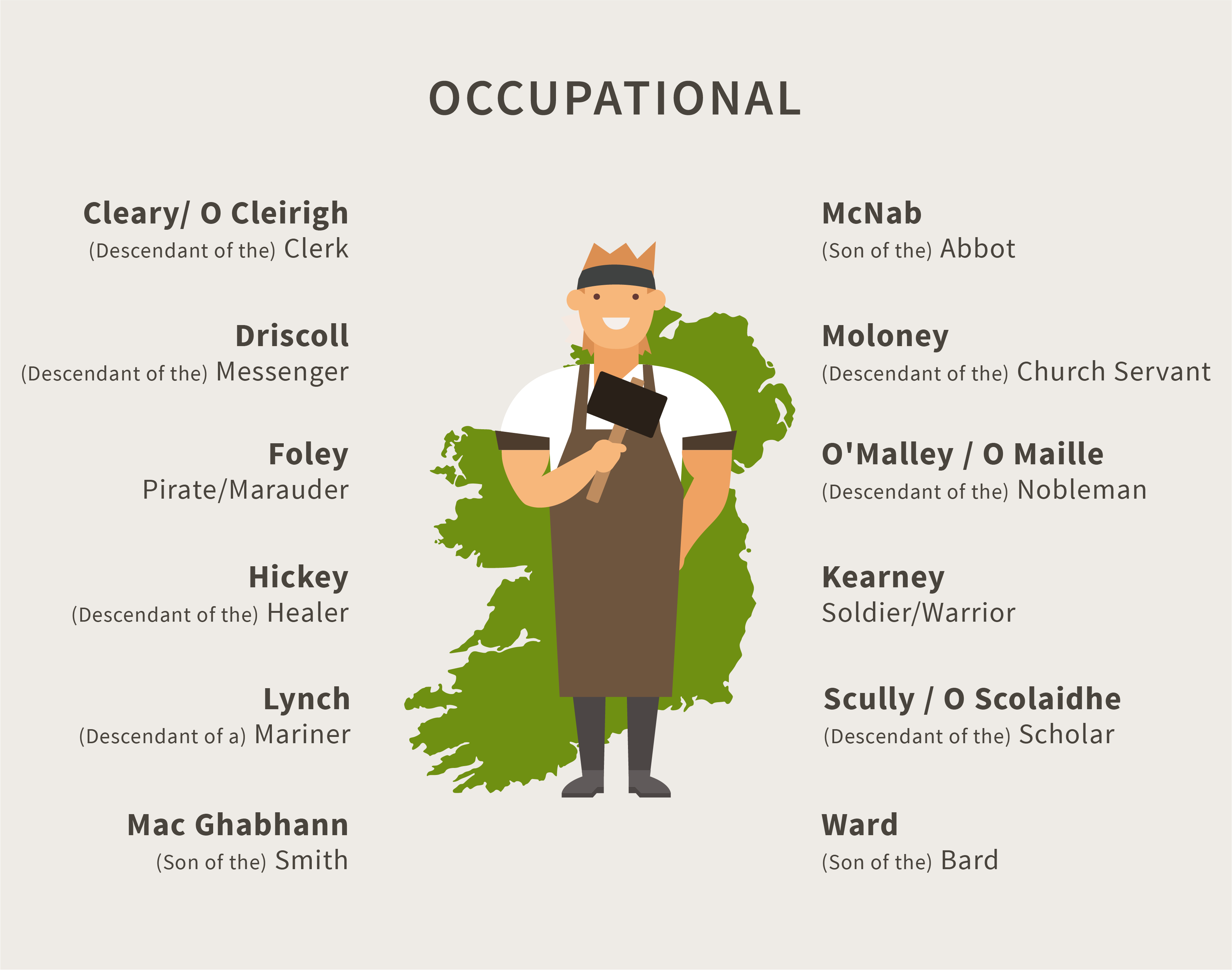
McCarthy is a popular last name in Ireland that is derived from the Irish Gaelic name "Mac Carthaigh," which means "son of Carthach." The McCarthy clan was once one of the most powerful families in Munster, and their influence can still be seen today in the many places that bear their name, such as McCarthy's Bar in Castletownbere.
Walsh

Walsh is a common last name in Ireland that is believed to be derived from the Old English name "Wealh," which means "foreigner." The Walsh family is particularly associated with County Kilkenny and was once one of the most prominent families in the area.
Byrne

Byrne is another popular last name in Ireland that is believed to be derived from the Irish Gaelic name "O'Broin," which means "descendant of Bran." The Byrne family was once one of the most powerful families in County Wicklow and their name can be found throughout Ireland and the world.
McDonald

McDonald is a common last name in Ireland that is derived from the Irish Gaelic name "Mac Dhomhnaill," which means "son of Domhnall." The McDonald clan was once one of the most powerful families in Scotland and Ireland, and their influence can still be seen today in the many places that bear their name, such as McDonald's Restaurant.
Doyle

Doyle is a popular last name in Ireland that is believed to be derived from the Irish Gaelic name "O'Dubhghaill," which means "descendant of Dubhghall." The Doyle family was once one of the most prominent families in County Wexford, and their name can be found throughout Ireland and the world.
McMahon

McMahon is a common last name in Ireland that is derived from the Irish Gaelic name "Mac Mathghamhna," which means "son of Mathghamhain." The McMahon clan was once one of the most powerful families in County Clare, and their influence can still be seen today in the many places that bear their name, such as McMahon's Pub in Kilkee.
Murphy
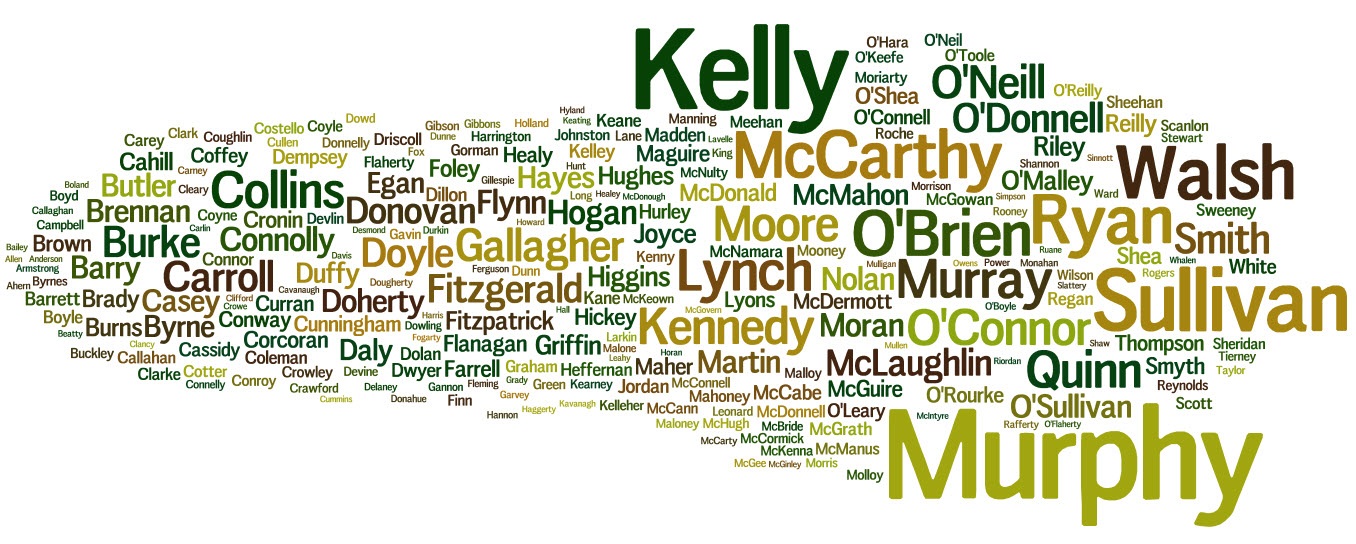
Murphy is a popular last name in Ireland that is believed to be derived from the Irish Gaelic name "O'Murchadha," which means "descendant of Murchadh." The Murphy family is particularly associated with County Wexford and was once one of the most prominent families in the area.
Sullivan

Sullivan is a common last name in Ireland that is believed to be derived from the Irish Gaelic name "O'Sullivan," which means "descendant of Súilleabháin." The Sullivan family was once one of the most powerful families in Munster and their name can be found throughout Ireland and the world.
Fitzgerald
Fitzgerald is a popular last name in Ireland that is believed to be derived from the Old French name "FitzGerald," which means "son of Gerald." The Fitzgerald family was once one of the most powerful families in Ireland, and their influence can still be seen today in the many places that bear their name, such as Fitzgerald's Park in Cork.
Flanagan
Flanagan is a common last name in Ireland that is believed to be derived from the Irish Gaelic name "O'Flanagan," which means "descendant of Flanagan." The Flanagan family was once one of the most prominent families in County Roscommon and their name can be found throughout Ireland and the world.
Daly

Daly is a popular last name in Ireland that is believed to be derived from the Irish Gaelic name "O'Dálaigh," which means "descendant of Dálaigh." The Daly family was once one of the most prominent families in County Galway and their name can be found throughout Ireland and the world.
Connelly

Connelly is a common last name in Ireland that is believed to be derived from the Irish Gaelic name "O'Conghaile," which means "descendant of Conghaile." The Connelly family was once one of the most prominent families in County Galway and their name can be found throughout Ireland and the world.
Quinn

Quinn is a popular last name in Ireland that is believed to be derived from the Irish Gaelic name "O'Cuinn," which means "descendant of Conn." The Quinn family was once one of the most prominent families in County Tyrone and their name can be found throughout Ireland and the world.
Reilly

Reilly is a common last name in Ireland that is believed to be derived from the Irish Gaelic name "O'Raghallaigh," which means "descendant of Raghallach." The Reilly family was once one of the most prominent families in County Cavan and their name can be found throughout Ireland and the world.
Donovan

Donovan is a popular last name in Ireland that is believed to be derived from the Irish Gaelic name "O'Donabhain," which means "descendant of Donnabhán." The Donovan family was once one of the most prominent families in County Cork and their name can be found throughout Ireland and the world.
Kennedy

Kennedy is a common last name in Ireland that is believed to be derived from the Irish Gaelic name "O'Cinneide," which means "descendant of Cinnéide." The Kennedy family was once one of the most prominent families in County Tipperary and their name can be found throughout Ireland and the world.
Moran

Moran is a popular last name in Ireland that is believed to be derived from the Irish Gaelic name "O'Morain," which means "descendant of Morann." The Moran family was once one of the most prominent families in County Mayo and their name can be found throughout Ireland and the world.
Meta Description
Explore the most common last names in Ireland and their meanings. Discover the rich cultural history behind these surnames, which are often associated with specific regions and families.
Meta Keywords
common last names in Ireland, Irish surnames, O'Brien, Kelly, McCarthy, Walsh, Byrne, McDonald, Doyle, McMahon, Murphy, Sullivan, Fitzgerald, Flanagan, Daly, Connelly, Quinn, Reilly, Donovan, Kennedy, Moran
Related video of Common Last Names in Ireland
Eddie Murphy
Eddie Murphy played the lead role of Prince Akeem Joffer in Coming To America. Since then, he has become one of the most successful actors in Hollywood. He has starred in numerous blockbuster movies including Beverly Hills Cop, The Nutty Professor, and Shrek. He has won multiple awards for his work, including a Golden Globe and a Primetime Emmy. Murphy is currently working on the sequel to Coming To America, which is set to be released in 2021.
Arsenio Hall
Arsenio Hall played the role of Semmi, Prince Akeem's loyal friend and sidekick. Since Coming To America, Hall has continued to work as an actor, comedian, and talk show host. He hosted The Arsenio Hall Show from 1989 to 1994, and then again from 2013 to 2014. He has also appeared in movies such as Harlem Nights and Black Dynamite.
James Earl Jones
James Earl Jones played the role of King Jaffe Joffer, Prince Akeem's father. Jones is a legendary actor who has appeared in many iconic movies, including Star Wars and The Lion King. He has won numerous awards for his work, including a Tony Award and multiple Emmy Awards. Jones continues to work in the entertainment industry, and is currently filming a new movie called The Comeback Trail.
John Amos
John Amos played the role of Cleo McDowell, the owner of McDowell's fast food restaurant. Amos has continued to work as an actor, appearing in movies such as Die Hard 2 and The Players Club. He has also appeared in TV shows such as The West Wing and Two and a Half Men. Amos is currently working on a new TV show called When the Streetlights Go On.
Shari Headley
Shari Headley played the role of Lisa McDowell, Cleo's daughter and Prince Akeem's love interest. After Coming To America, Headley continued to work as an actress, appearing in movies such as The Preacher's Wife and Johnson Family Vacation. She has also appeared in TV shows such as All My Children and The Haves and the Have Nots.

Paul Bates
Paul Bates played the role of Oha, the royal servant who accompanies Prince Akeem and Semmi to America. Since Coming To America, Bates has continued to work as an actor, appearing in movies such as True Romance and 8 Mile. He has also appeared in TV shows such as NYPD Blue and Law & Order: Special Victims Unit.
Eric LaSalle
Eric LaSalle played the role of Darryl Jenks, Lisa's arrogant and wealthy boyfriend. LaSalle has continued to work as an actor, appearing in movies such as Logan and Johnny Was. He is also a director and producer, and has worked on TV shows such as ER and Law & Order: Special Victims Unit. LaSalle is currently working on a new TV show called Rebel.

Samuel L. Jackson
Samuel L. Jackson had a small role in Coming To America as a robber who holds up McDowell's restaurant. Jackson has become one of the most successful actors in Hollywood, appearing in numerous blockbuster movies such as Pulp Fiction, The Avengers, and Star Wars. He has been nominated for multiple awards for his work, including an Academy Award and a Golden Globe.
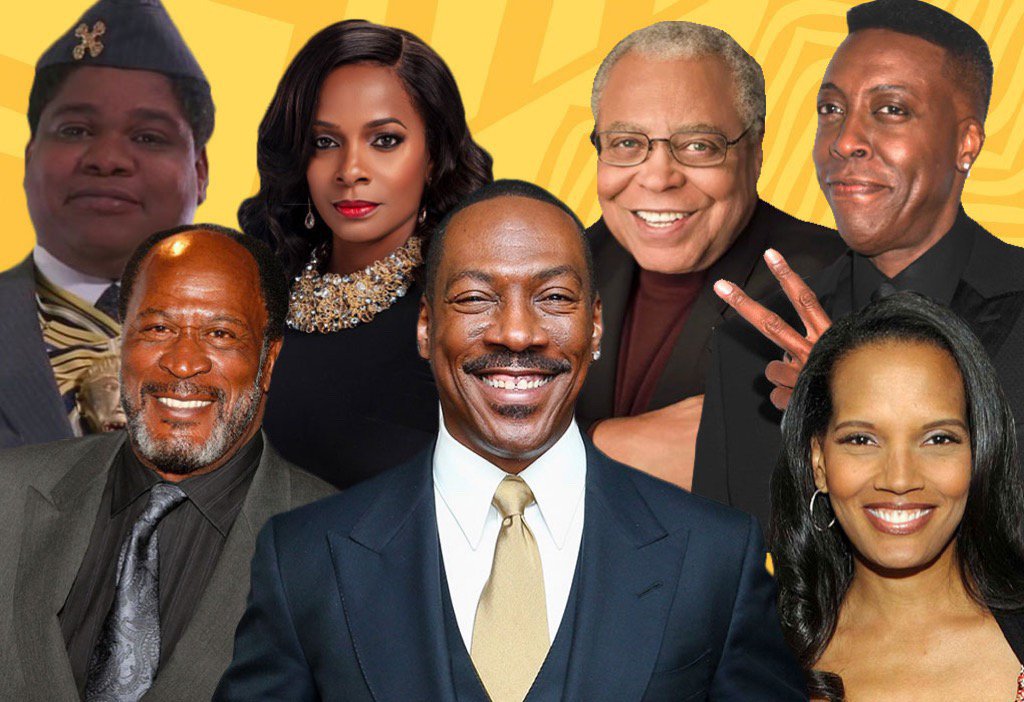
Conclusion
The cast of Coming To America has gone on to achieve great success in their careers since the movie was released in 1988. Eddie Murphy and Arsenio Hall, in particular, have become icons in the entertainment industry. It will be exciting to see them reprise their roles in the upcoming sequel. The legacy of Coming To America continues to live on, and the cast members will always be remembered for their memorable performances in this classic movie.
Related video of Coming To America Cast Where Are They Now

Music is an essential part of human life. It has been with us for thousands of years and has helped us express our emotions, connect with others, and even heal our bodies and minds. Whether it's through singing, playing an instrument, or simply listening to a song, music has the power to bring people together and create a sense of unity and joy.
The Benefits of Music
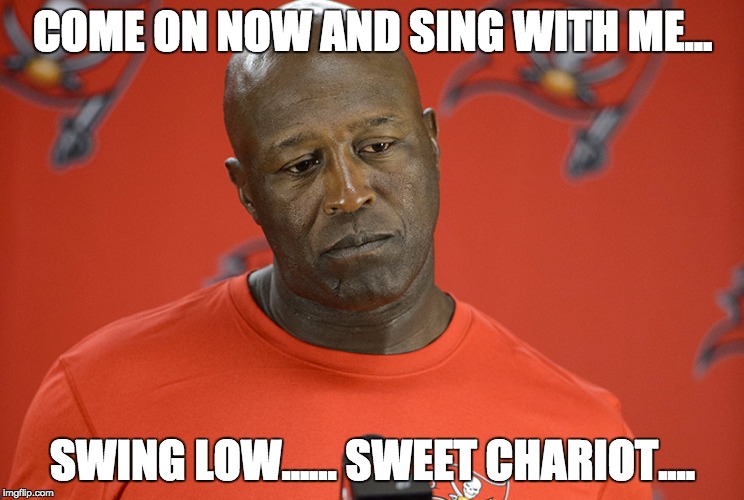
Research has shown that music can have a positive impact on our physical, emotional, and mental health. It can help reduce stress, lower blood pressure, and improve our mood. Listening to music can also stimulate the release of dopamine, a feel-good chemical in the brain, which can help us feel happier and more relaxed.
Playing an instrument or singing can have even more benefits. It can improve our hand-eye coordination, boost our cognitive function, and even enhance our memory. Learning to play an instrument or sing can also be a great way to build self-confidence and reduce anxiety.
The Power of Singing
Singing, in particular, has been shown to have numerous benefits. It can improve our breathing, which can help reduce stress and anxiety. Singing can also stimulate the release of endorphins, which can help us feel happier and more energized. Studies have even shown that singing can boost our immune system and help us fight off infections.
Singing with others can be especially powerful. It can create a sense of community and belonging, which can be particularly important for people who are feeling isolated or lonely. Singing together can also help us build social skills, improve our communication, and enhance our empathy and compassion.
The Joy of Music

Perhaps the most important benefit of music is the joy it brings us. Whether we're singing along to our favorite song, dancing to a catchy beat, or simply enjoying the sound of a beautiful melody, music has the power to lift our spirits and brighten our day.
So come on and sing it with me. Let's celebrate the power of music in our lives and all the joy and happiness it brings us.
Related video of Come On And Sing It With Me: The Power Of Music In Our Lives

Coloured toilet paper has been a popular household item in Canada for many years. It is a fun and unique way to add a pop of colour to your bathroom décor. While coloured toilet paper may be hard to find in stores, it is still available online and can be shipped to your home. In this article, we will explore the history of coloured toilet paper in Canada, the benefits of using coloured toilet paper, and where to buy it.
History of Coloured Toilet Paper in Canada

The first coloured toilet paper was introduced in the United States in the 1950s. It was not until the 1970s that coloured toilet paper became popular in Canada. The most popular colours were pink, blue, green, and yellow. However, by the 1980s, coloured toilet paper fell out of favour and was replaced by white toilet paper.
Today, coloured toilet paper is making a comeback as people look for ways to add more colour to their homes. Coloured toilet paper is available in a variety of colours and patterns, making it a fun and unique way to decorate your bathroom.
Benefits of Using Coloured Toilet Paper
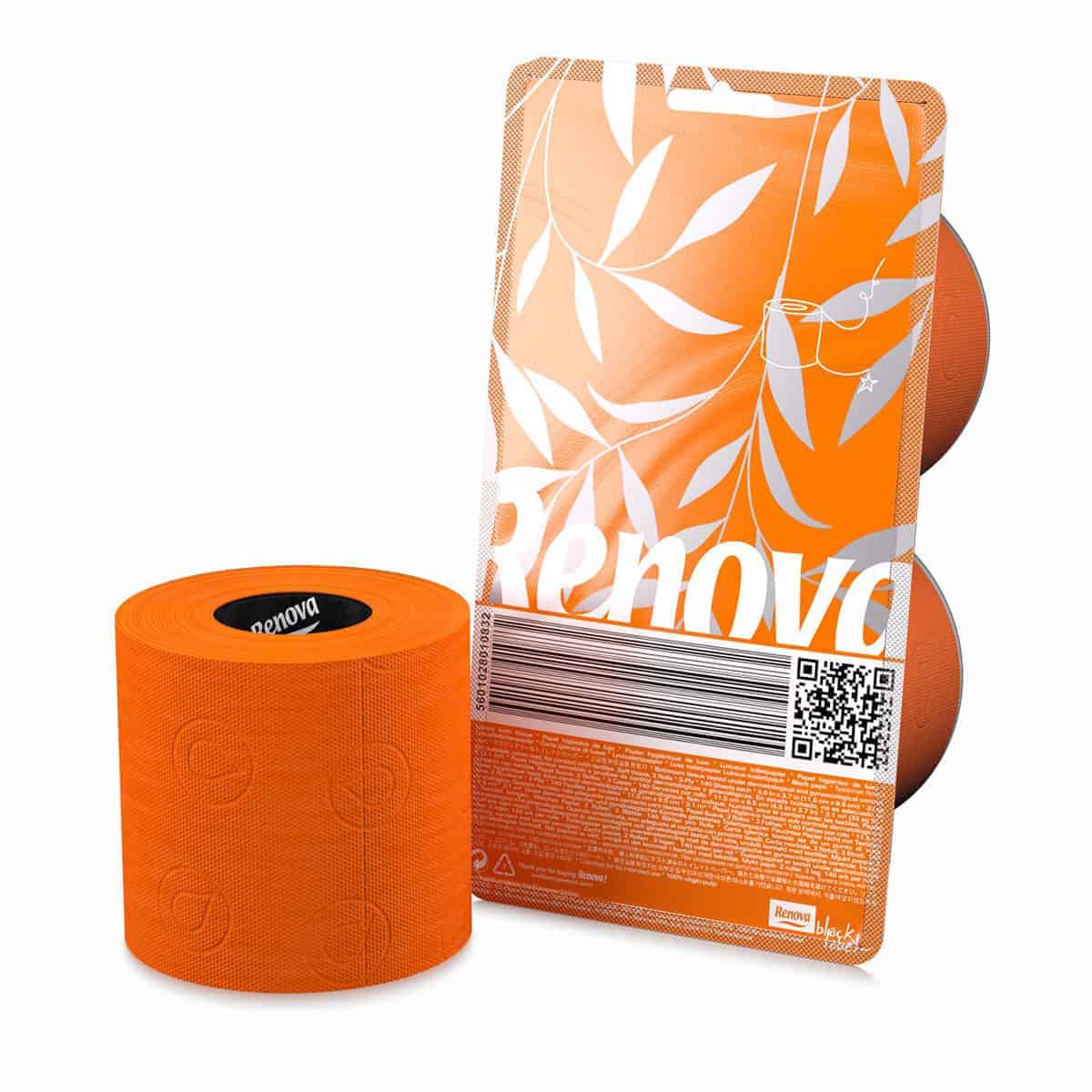
There are many benefits to using coloured toilet paper in your home. First and foremost, it adds a pop of colour to your bathroom décor. If you have a neutral or plain bathroom, coloured toilet paper can be a fun way to add some personality and flair to the space.
Another benefit of coloured toilet paper is that it is softer and more gentle on your skin than traditional white toilet paper. Coloured toilet paper is often made from a softer material and is less abrasive, making it a great choice for people with sensitive skin.
Finally, coloured toilet paper is environmentally friendly. Most coloured toilet paper is made from recycled materials and is biodegradable. This means that it is better for the environment and reduces waste.
Where to Buy Coloured Toilet Paper in Canada
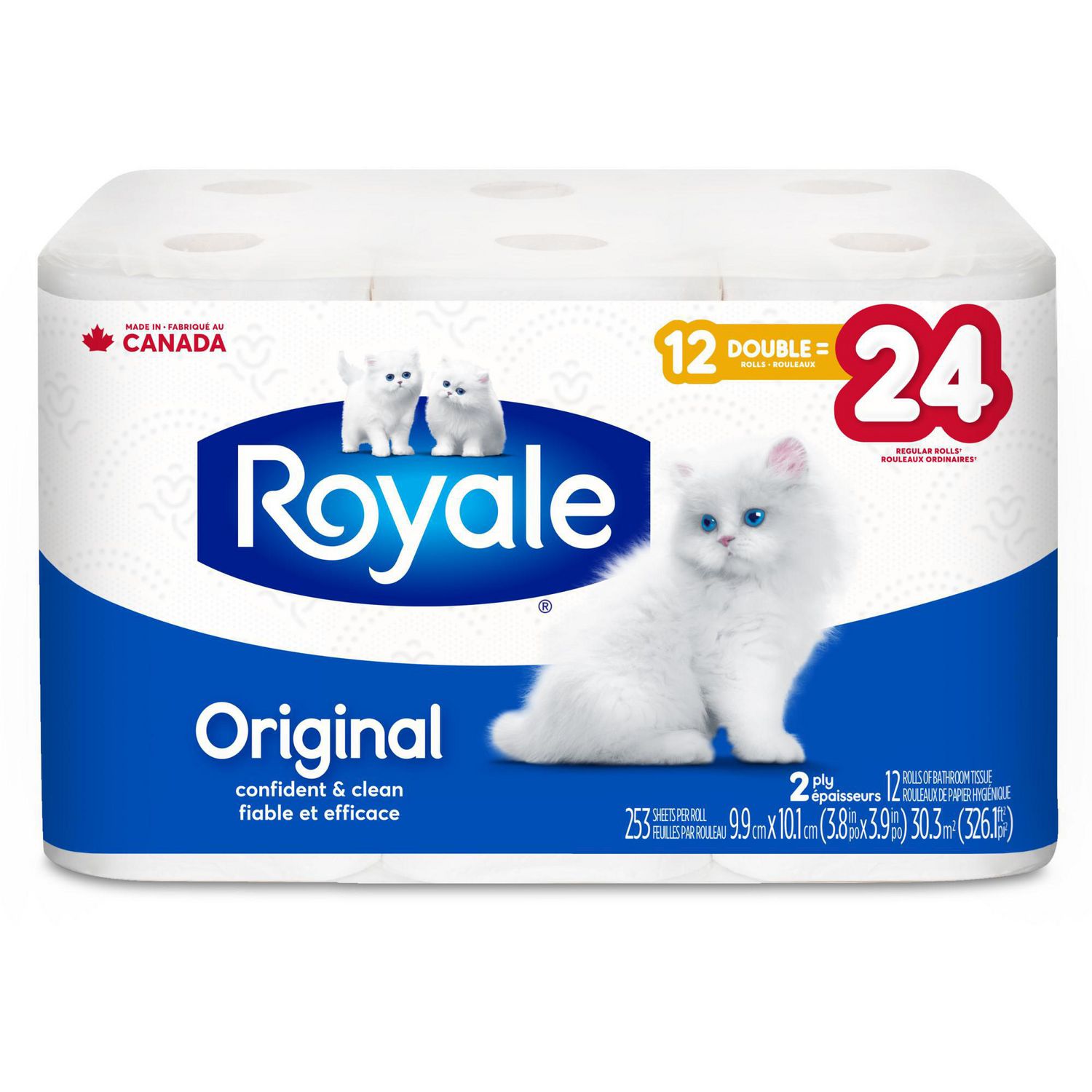
While coloured toilet paper may be hard to find in stores, it is still available online. There are many websites that offer a wide selection of coloured toilet paper in a variety of colours and patterns. Some popular websites include Amazon, Etsy, and Walmart.
When purchasing coloured toilet paper online, it is important to read reviews and check the seller's return policy. This will ensure that you are getting a quality product and that you can return it if you are not satisfied.
Conclusion
Coloured toilet paper is a fun and unique way to add a pop of colour to your bathroom décor. While it may be hard to find in stores, it is still available online and can be shipped to your home. Whether you are looking for a soft and gentle toilet paper or an environmentally friendly option, coloured toilet paper is a great choice.
Related video of Coloured Toilet Paper Canada

Introduction
The Colossus of Rhodes was a gigantic statue of the Greek god Helios, erected in the city of Rhodes, Greece, in 280 BC. It was considered one of the Seven Wonders of the Ancient World, but unfortunately it was destroyed by an earthquake in 226 BC. In this article, we will learn more about the Colossus of Rhodes and its interesting facts that kids would love to know.
Size and Description
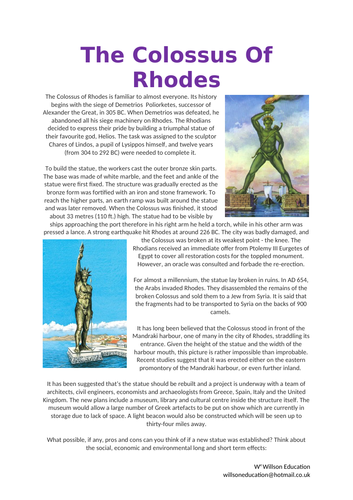
The Colossus of Rhodes was an enormous statue that stood over 100 feet tall. It was made of bronze and iron, and was built over a period of twelve years. The statue depicted Helios, the Greek god of the sun, holding a torch in one hand and a spear in the other. The statue was so large that ships could sail between its legs.
The Construction

The construction of the Colossus of Rhodes began in 292 BC, and it was completed in 280 BC. It was built by the sculptor Chares of Lindos, who used iron bars to support the bronze plates that formed the skin of the statue. The statue was hollow, and the interior was filled with stone blocks to provide stability. The statue was erected on a stone pedestal near the harbor of Rhodes.
The Destruction
In 226 BC, a massive earthquake struck Rhodes and the Colossus of Rhodes was toppled. According to some accounts, it remained in place for over 800 years, until the Arabs invaded Rhodes in the 7th century AD and sold the remains for scrap metal.
The Legend of the Sun God
The Colossus of Rhodes was built to honor the Greek god Helios, and it was said that the statue was so large that it could be seen from miles away. According to legend, when the statue was completed, Helios himself came down from the heavens to bless it with his presence.
The Symbol of Rhodes
The Colossus of Rhodes was not only a magnificent statue, but also a symbol of the city of Rhodes. It was said that the statue was built to celebrate the city's victory over the invading forces of the ruler of Cyprus. Today, the city of Rhodes still uses the image of the Colossus in its coat of arms.
The Inspiration for Other Statues
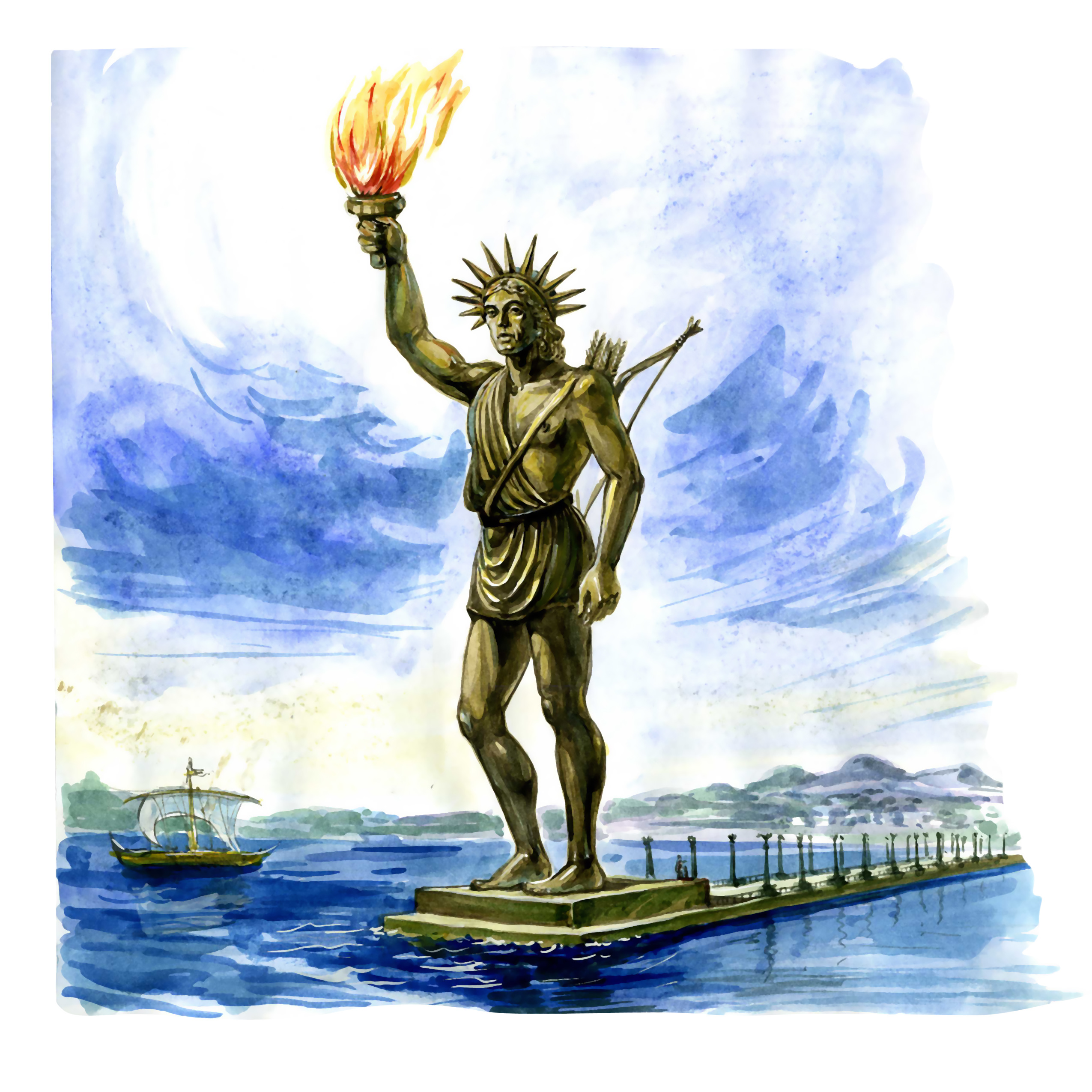
The Colossus of Rhodes was an inspiration for other large statues that followed. The most famous of these is the Statue of Liberty in New York Harbor, which was designed by Frederic Bartholdi and completed in 1886. Like the Colossus, the Statue of Liberty holds a torch in one hand and a tablet in the other.
The Myth of the Colossus Straddling the Harbor

Contrary to popular belief, the Colossus of Rhodes did not straddle the harbor of Rhodes. This myth may have come from a description by the ancient Greek historian Pliny the Elder, who wrote that the statue was "over the entrance of the harbor." However, the statue was actually located on a hill overlooking the harbor.
The Colossus was not Rebuilt
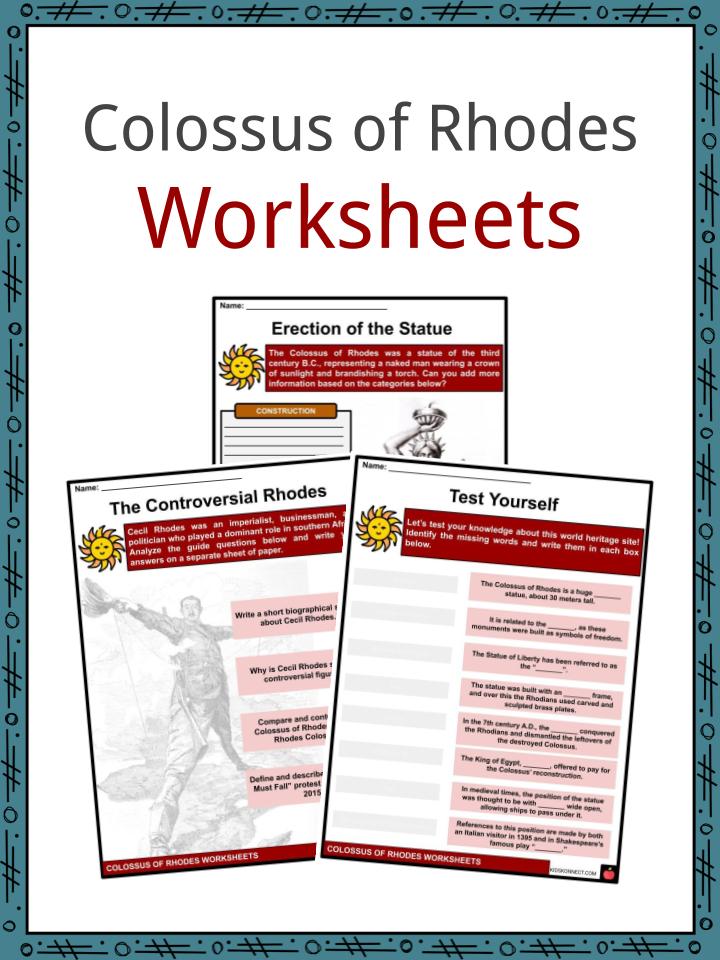
Despite popular belief, the Colossus of Rhodes was not rebuilt after it was destroyed. The cost of building such a massive statue was simply too high, and the city of Rhodes was facing other financial difficulties at the time. Instead, the remains of the statue were sold for scrap metal.
The Efforts to Rebuild the Colossus

Over the years, there have been many efforts to rebuild the Colossus of Rhodes. In the 1970s, a group of Italian architects proposed a plan to rebuild the statue using modern materials, but the plan was never realized. Today, there are no plans to rebuild the Colossus, but its legacy lives on through its influence on art and architecture.
The Location of the Colossus

The exact location of the Colossus of Rhodes is not known, but it is believed to have been located near the harbor of Rhodes. Today, there is a bronze statue of Helios located near the site where the Colossus once stood.
The Importance of the Colossus of Rhodes
The Colossus of Rhodes was an important symbol of the ancient world, and it continues to inspire people today. Its size and beauty were awe-inspiring, and it served as a reminder of the power of the gods. Although it was destroyed long ago, its legacy lives on through its influence on art and architecture.
The Legacy of the Colossus
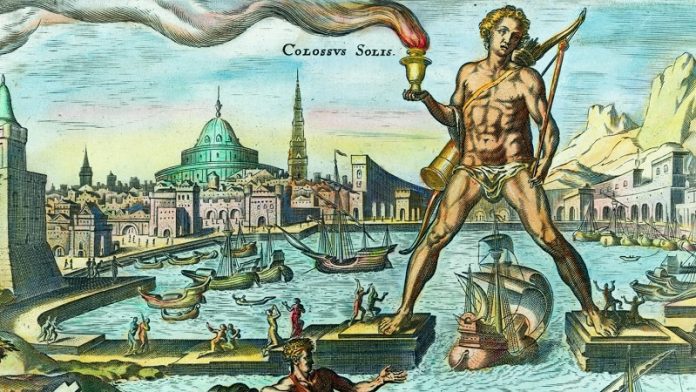
The Colossus of Rhodes may no longer exist, but its legacy lives on through its influence on art, literature, and popular culture. It has been the subject of countless books, movies, and TV shows, and it continues to inspire people today. Its sheer size and beauty continue to captivate the imagination, and it remains an important symbol of the ancient world.
Conclusion
The Colossus of Rhodes was a magnificent statue that stood over 100 feet tall and was considered one of the Seven Wonders of the Ancient World. Although it was destroyed by an earthquake in 226 BC, its legacy lives on through its influence on art and architecture. It continues to inspire people today, and it remains an important symbol of the ancient world.
Related video of Colossus of Rhodes Facts for Kids

Are you looking for a fun and unique way to celebrate this week? Look no further than Color Bread Ties Day Week! This week-long celebration is dedicated to the small but mighty bread tie, and all the colorful possibilities it holds. Read on to learn more about this fun and festive holiday.
What is Color Bread Ties Day Week?
Color Bread Ties Day Week is a celebration of the small, plastic tags that are used to seal bread bags. These ties, which come in a variety of colors, are often overlooked in our daily lives. However, during this holiday week, they take center stage as a symbol of creativity, innovation, and fun.
The holiday week was created to encourage people to get creative with their bread ties. From using them to organize cords and cables, to creating colorful works of art, there are endless possibilities for these small but mighty tags.
How to Celebrate Color Bread Ties Day Week

There are many ways to celebrate Color Bread Ties Day Week. Here are a few ideas to get you started:
- Create colorful works of art using bread ties. From simple shapes to intricate designs, the possibilities are endless!
- Use bread ties to organize your cords and cables. You'll never have to untangle a mess of cords again!
- Create your own jewelry using bread ties. From bracelets to necklaces, you can make a unique and colorful accessory.
- Get creative in the kitchen by using bread ties to label your food containers. You'll always know what's in the fridge!
These are just a few ideas to get you started. The key is to let your imagination run wild and see where your creativity takes you!
The History of Bread Ties
The bread tie was invented in the 1930s by a man named Floyd Paxton. Paxton, who worked for the packaging company Moline, came up with the idea as a way to seal bread bags more efficiently. The original bread ties were made of paper, but they were later replaced with plastic ties in the 1960s.
Today, bread ties are used around the world to seal bread bags and keep our loaves fresh. But during Color Bread Ties Day Week, they take on a whole new meaning as a symbol of creativity and fun.
Why Celebrate Color Bread Ties Day Week?
Color Bread Ties Day Week is a fun and lighthearted holiday that encourages us to embrace our creativity and have fun with the little things in life. It's a reminder that even the smallest objects can hold great potential for innovation and fun.
So why not celebrate Color Bread Ties Day Week this year? Break out your bread ties, get creative, and see where your imagination takes you!
Conclusion
Color Bread Ties Day Week is a fun and festive holiday that celebrates the small but mighty bread tie. Whether you use them to organize your cords and cables, create colorful works of art, or simply seal your bread bags, there are endless possibilities for these small tags. So why not celebrate this week by letting your creativity run wild and seeing where your imagination takes you?
Related video ofCelebrate Color Bread Ties Day Week
ads
Search This Blog
Blog Archive
- August 2022 (17)
- July 2022 (31)
- June 2022 (30)
- May 2022 (30)
- April 2022 (30)
- March 2022 (32)
- February 2022 (28)
- January 2022 (31)
- December 2021 (6)
About Me
